eCommerce in 2022: The New Normal for Retailers
Many aspects of our life saw major changes due to the pandemic. Work went home, events became virtual and shopping went online. However, with the pandemic in a new state of normal there has been a slow crawl back to what was perceived as “normal” in the pre-pandemic times. That being said, the pandemic has also fundamentally changed things in a way where the term “normal” has been redefined, and never has this been more evident than in the field of retail shopping.
In this post we will explore some of the changes that are being seen in the field of retail shopping for 2022 and its impact on the Canadian e-commerce landscape. We will also look at how we can fully leverage Google and its line of products to help customers and retailers alike.
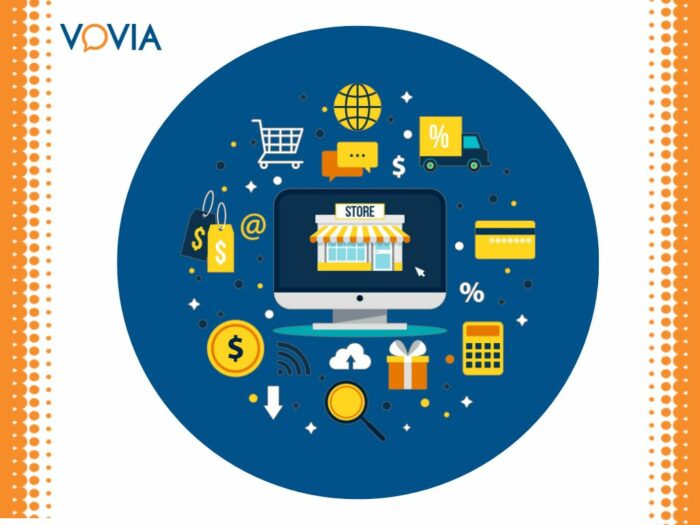
E-Commerce in 2022: The Halo Effect
As pandemic restrictions started to ease, there was a drop in online revenues across industries. This can be explained by the “Halo Effect”. The “Halo Effect” can be described as the consumer’s favouritism toward a line of products due to positive experiences with other products by this maker. As per a 2020 Google survey, during the peak of the pandemic, due to the shutting down of brick and mortar stores, more than 65% of shoppers in Canada were looking at more online avenues than in previous years, suggesting a significant change in their shopping behavior due to COVID-19. But with pandemic restrictions easing, in-store purchases started seeing a rise in traffic. In comparison to 2021, in store-visits are up 9% whereas e-commerce sales are down 7%. This waning of the “Halo Effect” is one of the key reasons for the drop in online revenues in comparison to the pandemic years.
That being said, there have been some changes to online user behaviour that have been ingrained, to the point of becoming a habit, that have fundamentally changed the way people shop. This is visible in the below chart where we can see that while in comparison to 2021 e-commerce sales saw a 7% drop, compared to 2019 there has been 90.5% growth. This has been the central theme of the post-pandemic e-commerce industry. The pandemic just accelerated the shift to online shopping by many years. However, in order to capitalize on the “Halo Effect” seen during the pandemic, businesses will have to retain the new users gained during the pandemic while maintaining a healthy influx of new customers.
eCommerce in 2022: The Retailer’s Guide
- The Path to Purchase
With so many more consumers getting introduced to and comfortable with online shopping, there has been a huge shift in the customer’s path to purchase. As the e-commerce landscape changes in the post-pandemic years, the customer’s path to purchase has become increasingly unique.
If the influx of new users gained during the pandemic is to be retained, retailers have to be agile in their online marketing and content strategies. As per a Google article from earlier in the year, 48% of consumers in surveyed countries around the world say they get inspiration for purchases when they are online.
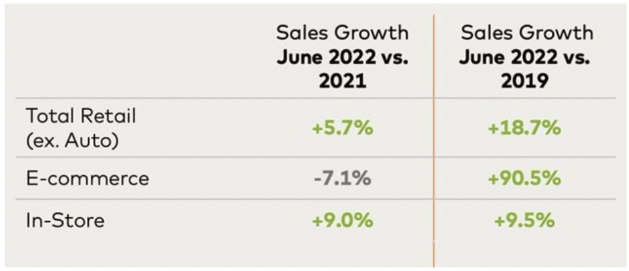
Consumers are constantly discovering new brands in the time being spent online. This is where a solid omni-channel strategy is paramount in engaging potential customers. Along with maintaining a strong presence on search and shopping, implementing Performance Max campaigns and local inventory ads will guide potential shoppers to nearby stores where their order can be fulfilled. This will help provide a seamless online-offline experience for the customer which in turn will build brand loyalty. This is evident when we look at the following statistics:
- 31% of consumers in surveyed countries say they are researching online more before purchasing to avoid stock, inventory, and shipping challenges.
- 2.56% of instore shoppers used their phones to shop or research items while they were in a store the past week.
2. Fully Leverage Google
In this section we will look at how we can leverage Google and its products to ensure success for retailers and ease of use for customers.
Google Search & Shopping: Search and shopping continue to remain the top performing direct response channels for retailers worldwide. Being present on Google’s SERPs for the right terms almost guarantees relevant traffic to the website. The following are a few techniques and ideas that retailers can adopt/implement on their Adwords accounts in order to ensure that presence and performance are both maximized:
- Broad Match Terms:
- Broad terms were avoided by most marketers for the longest time. While the broad keywords did drive high volumes of traffic, the volume of irrelevant search queries, the time required to sift through them and the overall poor performance made it something that marketers did not like using.
- However, over the years Google has vastly improved the implementation of this match type which has led to improvement in the terms of KPIs for marketers across the board.
- It must be noted that marketers still need to maintain a level of caution in the initial days of the broad keyword campaign launch to check and exclude irrelevant queries periodically. However, with a strong negative list of keywords and automated bidding strategies, this keyword type can be quite useful to retailers worldwide.
- Shopping Annotations:
- Product listing ads or PLAs are another ad format that provides prime placement on the SERPs for the most relevant search terms. Not only is this extremely cost effective due to the low CPCs, but also increases the chances of a conversion due to being present on relevant searches.
- Using shopping annotations is a simple and free technique to stand out from the competition that is also running PLAs. Adding annotations that call out discounts, free and fast shipping, return and refund options is a definite way to improve CTR and drive conversions.
- It must also be noted that while PLAs ensure top of the page presence for the relevant terms, by using the Google Merchant center (GMC) retailers can also list their products under the shopping tab for free. Along with the addition of the merchant center annotations, this is a sure fire way to drive performance for retailers across the world.
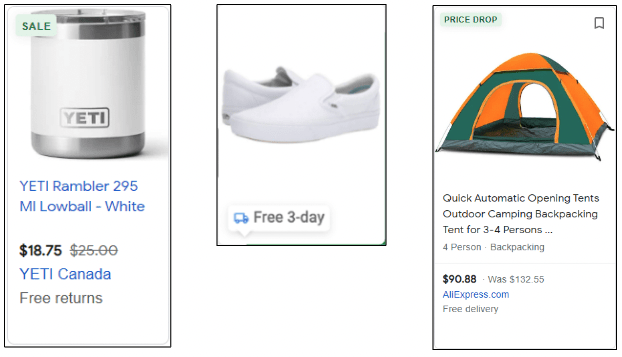
- Price Competitiveness Report:
- This report is available in the GMC and shows how the competition is pricing products that we are selling. You’ll see an average price for each product, which can help you understand the price at which other retailers are successfully attracting clicks, as well as aggregate metrics on benchmark prices over time.
- By studying this report, we can raise bids on products that are competitively priced as well as revise pricing for products where the competitor is giving a better deal.
- This is a free tool in the GMC that allows retailers to make changes to pricing decisions and merchandising strategies for the available inventory.
3. YouTube
Over the years, YouTube has become a key tool in the shopper’s arsenal. After Google, it is the second biggest search engine in the world. As per a recent Google survey, 89% agree that YouTube creators give the best information about products and brands. Customers are well aware that along with Google search and shopping, YouTube also provides useful information in terms of product information. From unboxing videos to reviews, to simple “how to” videos, YouTube has become central to the path to purchase for scores of customers. In terms of content, around 3.7M new videos are uploaded to YouTube every day – that’s around 271,330 hours of video content. Maintaining a presence on the platform is critical to retailers who want to add more people to their purchase funnel. Here is how retailers can leverage YouTube to the fullest:
- Video Action Campaigns:
- This new YouTube campaign type allows retailers to add their GMC feed to YouTube campaigns. The ad unit will populate products from the product feed on the basis of the customer’s interests and browsing history.
- This campaign can be optimized for driving conversions, with retailers seeing more than 60% higher conversions with lower CPAs. Along with the awareness functionality that we see on YouTube, retailers that run YouTube ads in conjunction with Search ads see 8% more conversions at their target CPA.
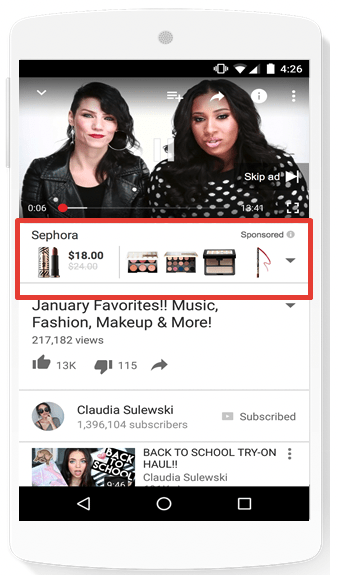
4. In-Store Sales
With pandemic restrictions and mandates becoming a thing of the past, there has been a massive resurgence in in-store visits. However, with the pandemic having fundamentally changed online user behaviour, customers are increasingly using online resources in order to do offline purchases. Searches for terms such as “open now near me” have grown globally by over 400% year over year.
In my personal experience, we saw that certain furniture for our apartment was going to take 12-14 days to get delivered if ordered online but only 2-3 days if we went to the nearest store location. The store website even mentioned where in the store the product is located and how much inventory is available. We then took a trip to the store location and were fortunate enough to pick up the last piece of inventory of the furniture we were looking for. All in all, with the help of Google, we managed to narrow down the product we wanted. We then checked the website to see order fulfillment times and finally made a decision to visit the store to complete the purchase. This sort of fluid and stable omni-channel experience is not only recommended but almost critical in ensuring success for retailers. Here are some pointers that retailers can keep in mind to ensure a better experience for customers doing in-store visits:
- Strong Google My Business Profile:
- Setting up your Google My Business profile is free and extremely critical for retailers with physical locations. This profile will contain your business’ address, store hours, photos, and more.
- It also allows customers to post reviews and feedback for the business. It will help assist customers with important information when they’re deciding where to buy — like your address, pickup and delivery options, and store hours.
- Local Inventory Ads:
- This feature allows retailers to showcase in-store inventory on Google using a specialized feed in the GMC. Upon clicking the listing, the shopper can either be directed to the retailers website or a Google hosted storefront page. This page usually contains all the necessary order fulfillment details.
- As I had mentioned in my case previously, the “in-store” availability feature was not only useful but also essential to early order fulfillment and a good customer experience.
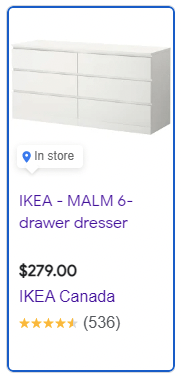
- Performance Max Campaigns:
- This campaign type has been a true game changer for the accounts I am working on. Not only has it driven solid performance in terms of the relevant account KPIs, but it has done so while being extremely cost efficient. This campaign can also be set up and optimized towards driving store traffic.
- Using this campaign, we can drive foot traffic by sharing store openings, special in-store promotions, updated business hours and specific products that are available in nearby stores.
- By adding an average order value that corresponds to a store visit, we can leverage this channel to drive revenue as well.
5. Leverage First Party Data
- With Chrome dropping 3rd party cookies in 2024, adoption of first party data will see an increase in the coming months. Brands using first-party data for key marketing functions achieved up to a 2.9X revenue lift and a 1.5X increase in cost savings. First party cookies, which allow businesses to collect information about their website users with consent, are not yet going away.
- Developing robust first party data will be crucial in eliminating the reliance on third party data.
- First party data is data your business owns and has been directly collected from your audience with consent. Due to this direct connection, there are typically fewer restrictions in the way data can be used to inform your marketing decisions, making first party data less restrictive than other data types.
- Loyalty programs, newsletter databases and other data collection methods such as website usage can be used to generate a solid first party database. CRMs will also be critical in leveraging the same.
Closing Thoughts
With life getting back to what we knew in the pre-pandemic times as “normal”, it is time to acknowledge that our definition of “normal” has changed. Permanently. People have become so much more tech-savvy and have adopted online shopping as their primary purchase option. In this day and age, the retailers that can provide a seamless and user-friendly path to purchase, with competitive pricing and robust & timely order fulfillment, will reap the benefits of great performance for the foreseeable future.
We’d love to hear how you are (or have been) preparing for the changes to shopping behaviour this year. Want to bounce ideas off of us? Drop us a line at info[at]vovia.com, or connect with us on social!
